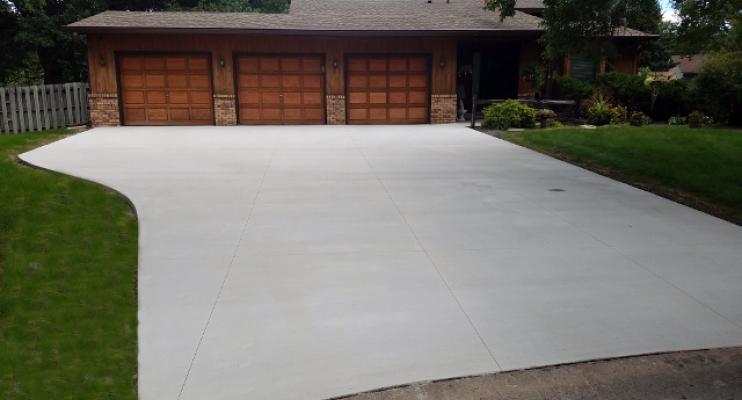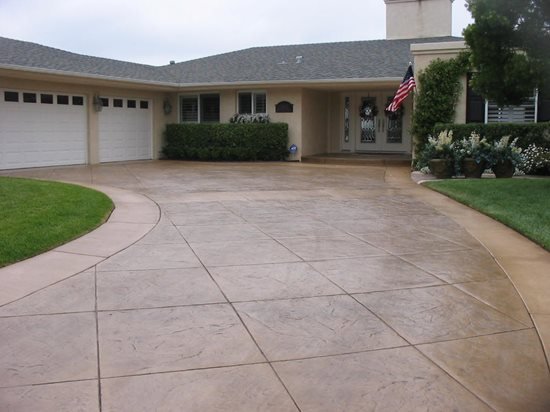Discover Legendary Concrete Brentwood: Unmatched Top Quality and Solution
Discover Legendary Concrete Brentwood: Unmatched Top Quality and Solution
Blog Article
The Eco-friendly Selection: Concrete Sidewalks for Your Community
Concrete walkways are an ubiquitous function in many neighborhoods, yet their influence on the atmosphere is frequently overlooked. Choosing concrete for your area sidewalks can make a substantial difference in terms of sustainability and eco-friendliness. The advantages of selecting concrete go past simple aesthetic appeals and functionality. By thinking about the environmental benefits and lasting impacts on the area, the option of products for sidewalks comes to be an important choice. Let's discover why concrete sidewalks may be the eco-friendly option your area needs.
Benefits of Concrete Sidewalks
When thinking about the installment of sidewalks in a neighborhood, the advantages of picking concrete over various other materials are substantial and various. Concrete walkways use resilience, standing up to hefty foot web traffic, weather condition variations, and environmental components much better than alternate materials like asphalt or gravel. This long life translates to cost-effectiveness in the lengthy run, as concrete pathways call for much less constant repairs and maintenance. Additionally, concrete is a flexible product that can be quickly tailored to enhance the visual of any kind of area via numerous coatings, shades, and patterns.

Durability and Durability
Just how can concrete sidewalks outmatch other products in regards to resilience and long life? Concrete sidewalks are renowned for their phenomenal resilience and long life contrasted to alternative materials like asphalt or pavers. The intrinsic strength of concrete makes it extremely immune to fracturing, shifting, and general deterioration created by foot traffic, weather changes, and various other ecological factors. Unlike asphalt, which can soften in high temperatures and fracture in cold problems, concrete keeps its architectural integrity, requiring very little upkeep with time.
Concrete pathways additionally have a longer life-span than pavers, which are vulnerable to uneven settling, weed growth in between joints, and specific paver movement. The strong, continual surface area of concrete minimizes stumbling threats and makes sure a smooth walking path for pedestrians. In addition, concrete's resilience lowers the requirement for constant repairs or substitutes, making it a cost-effective and lasting option for area sidewalks. By purchasing concrete pathways, communities can delight in a long-lasting and reputable facilities that enhances the total visual charm and functionality of the location.
Low Upkeep Requirements
Concrete walkways stand out for their minimal upkeep demands because of their sturdy nature and lasting efficiency. Unlike alternative products that might require constant repairs or replacements, concrete pathways provide a cost-effective service that requires little maintenance in time. Among the vital advantages of concrete walkways is their resistance to weathering and disintegration. This means they can endure extreme climate condition, heavy foot website traffic, and various other environmental elements without degrading promptly.
Regular upkeep for concrete sidewalks generally includes easy jobs such as routine cleansing to eliminate debris and occasional sealing to safeguard the surface. In comparison to materials like asphalt or pavers that may shift, crack, or degrade more easily, concrete sidewalks maintain their structural honesty with marginal treatment. In addition, any kind of repair services that might be needed are normally localized and can be addressed swiftly, reducing both the moment and price connected with upkeep.

Environmental Advantages
With an emphasis on sustainability and eco-friendliness, concrete original site sidewalks supply noteworthy ecological advantages that contribute to a greener area infrastructure. In addition, concrete sidewalks have a high solar reflectance index, indicating they mirror a considerable quantity of sunshine instead of soaking up and retaining heat.
In addition, concrete is a porous material that allows water to infiltrate into the ground, minimizing stormwater drainage and assisting in groundwater recharge. This helps prevent erosion, reduce flooding, and keep the all-natural equilibrium of water supply in the area. By choosing concrete sidewalks, communities can make a sustainable choice that positively impacts the atmosphere and improves the high quality of life for citizens.
Enhancing Community Sustainability
By prioritizing sustainable infrastructure services, communities can find cultivate a harmonious balance in between ecological awareness and area advancement. Enhancing community sustainability includes a diverse method that surpasses just the ecological advantages of concrete walkways. Executing eco-friendly spaces, promoting energy-efficient techniques, and cultivating a feeling of neighborhood engagement are important components of developing a lasting neighborhood.
One way to boost community sustainability is with the integration of absorptive concrete walkways. These sidewalks allow rain to leak into the ground, lowering stormwater overflow and reducing the pressure on local drain systems. Concrete Contractor. By including permeable sidewalks, communities can improve water top quality, decrease flooding risks, and improve overall ecological resilience
In addition, promoting different transportation methods such as strolling and published here cycling can substantially decrease carbon exhausts and promote a much healthier lifestyle amongst residents. Developing safe pedestrian paths, bike lanes, and designated greenways can motivate homeowners to depend much less on automobiles, better adding to the area's sustainability goals.
Final Thought
To conclude, concrete walkways supply various advantages for neighborhoods, including toughness, reduced maintenance demands, and ecological advantages. By selecting concrete pathways, communities can enhance their sustainability and add to an extra environmentally friendly setting. It is clear that concrete sidewalks are the optimal selection for areas wanting to enhance their framework in a long-lasting and environmentally friendly manner.
When thinking about the setup of pathways in an area, the advantages of choosing concrete over other materials are various and considerable. In addition, concrete's durability reduces the need for regular repair work or replacements, making it a sustainable and economical option for community pathways (Legendary Concrete Brentwood).With an emphasis on sustainability and eco-friendliness, concrete pathways use significant ecological advantages that contribute to a greener neighborhood infrastructure. Enhancing neighborhood sustainability involves a complex strategy that goes past simply the environmental benefits of concrete pathways.In verdict, concrete pathways use many benefits for neighborhoods, consisting of longevity, reduced maintenance requirements, and ecological benefits
Report this page